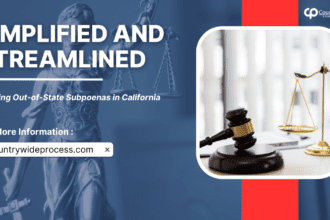Serving a Statement of Damages in California is a critical step in certain types of lawsuits, particularly those involving default judgments. Understanding the correct procedure can prevent delays and legal setbacks, ensuring your case proceeds smoothly under California’s legal standards.
What is a Statement of Damages?
A Statement of Damages is a legal document used to inform the defendant of the specific damages being claimed in a lawsuit. This document is essential, especially in personal injury and wrongful death cases, as it explicitly states the monetary compensation sought. Under the California Code of Civil Procedure, specifically Section 396a, proper service of the Statement of Damages is crucial to uphold the defendant’s right to be adequately informed of the claims against them.
Why is Proper Service Important?
In California, the service of a Statement of Damages is particularly significant when the defendant has not yet appeared in court or is facing a default judgment. Without proper notice of the exact amount of damages sought, a court may not enter a default judgment in favor of the plaintiff. This requirement is in place to ensure fairness, preventing plaintiffs from blindsiding defendants with unexpected monetary demands.
How to Properly Serve a Statement of Damages in California
Serving a Statement of Damages in California requires adherence to specific legal steps. Below are the primary methods allowed under the California Code of Civil Procedure:
1. Personal Service
Personal service involves delivering the Statement of Damages directly to the defendant. This method is the most straightforward and ensures that the defendant receives the document in person. The process server must complete a Proof of Service form, confirming that the document was hand-delivered to the defendant.
2. Substituted Service
If personal service is not possible, the California courts allow for substituted service. This involves leaving the Statement of Damages with a competent adult at the defendant’s residence or usual place of business. Additionally, a copy must be mailed to the defendant’s address. Substituted service is only acceptable if personal delivery has been attempted multiple times without success.
3. Service by Mail and Acknowledgment
In some situations, a plaintiff may serve the Statement of Damages by mail if the defendant agrees to acknowledge receipt. The defendant must return an acknowledgment form, confirming that they received the document by mail. This method can save time and costs but requires the cooperation of the defendant.
4. Publication
In rare cases where the defendant cannot be located, service by publication may be an option. This method requires a court order and involves publishing a notice in a newspaper approved by the court, informing the defendant of the lawsuit and the damages being sought. Publication must occur in the location where the defendant is most likely to be, based on the information available.
Steps to Take if the Defendant Fails to Respond
If the defendant does not respond after proper service of the Statement of Damages, the plaintiff may proceed with a default judgment. This is a court ruling in favor of the plaintiff due to the defendant’s lack of response. For a default judgment to be granted, the Statement of Damages must have been correctly served according to California’s legal requirements. This ensures that defendants are not unfairly penalized without being fully informed of the claims against them.
Key Considerations for Effective Service
- Document Every Attempt: Keep detailed records of all attempts to serve the Statement of Damages. If using substituted service, be sure to follow up with mail delivery to the defendant’s address.
- File Proof of Service: Always file a Proof of Service form with the court, confirming that the Statement of Damages was served correctly. This step is crucial to validate your efforts.
- Follow Legal Guidelines: Ensure that your service process aligns with the California Code of Civil Procedure. Any deviation could result in delays or complications, especially if a default judgment is involved.
Conclusion
Serving a Statement of Damages in California requires careful attention to legal guidelines to ensure that defendants receive proper notice. Compliance with these standards protects the integrity of the legal process and helps plaintiffs avoid unnecessary setbacks. For more information on service requirements, you can refer to California Code of Civil Procedure, Section 396a.
By following these steps and understanding the importance of proper service, you can effectively navigate the complexities of serving a Statement of Damages in California, ensuring your case proceeds within the boundaries of the law.






